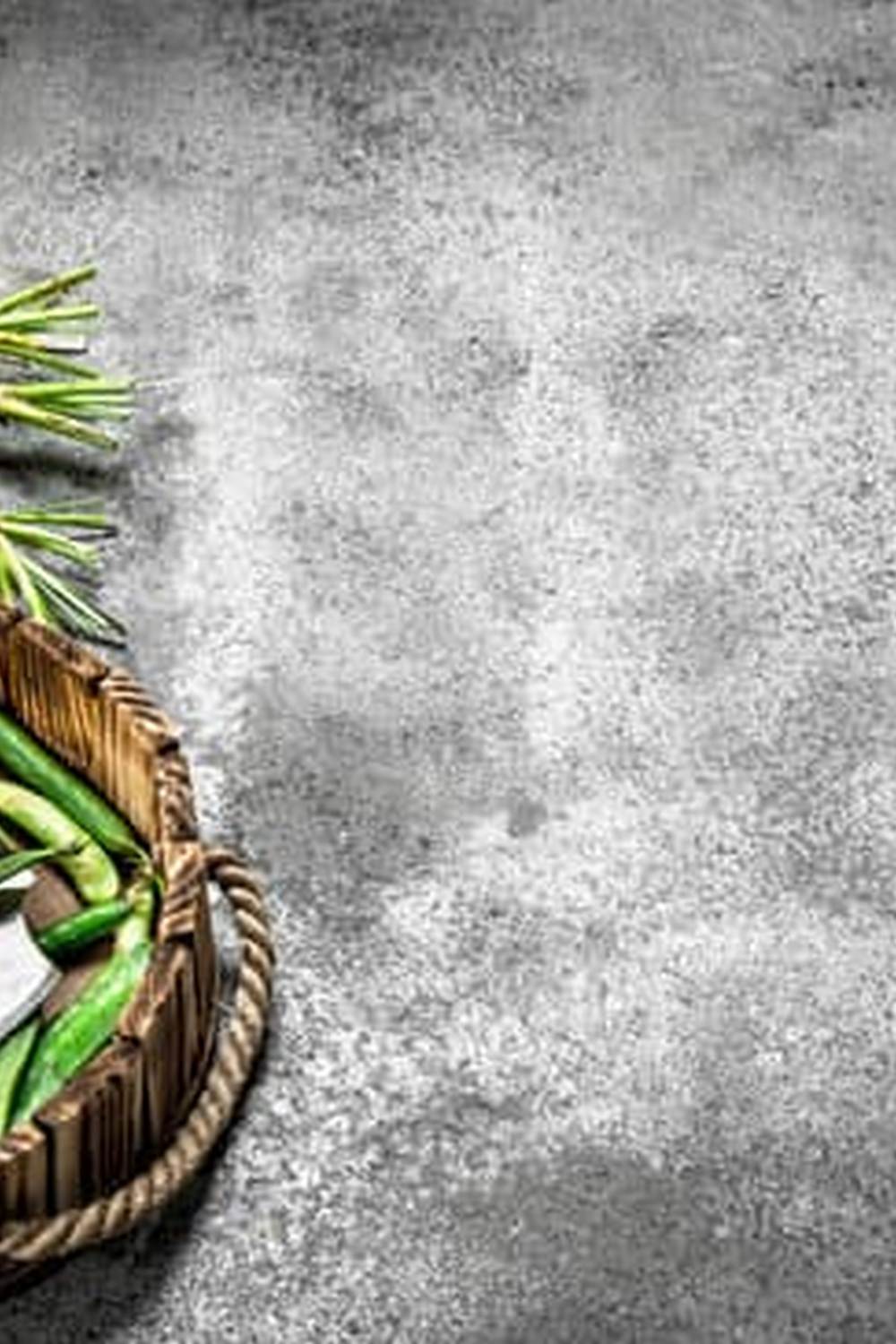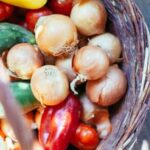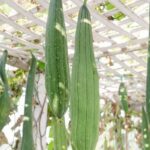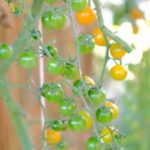Are you interested in taking your home vegetable garden to the next level? Look no further than CSU Intensive Vegetable Gardening. This method, developed by Colorado State University, is designed to maximize yields and make the most of available space. In this article, we will explore the basics of CSU Intensive Vegetable Gardening, its benefits, planning tips, plant selection, soil preparation, maintenance, pest and disease control, and real-life success stories.
CSU Intensive Vegetable Gardening offers numerous benefits for home gardeners. By implementing this method, you can expect higher yields in a smaller space compared to traditional gardening methods. This means more fresh produce for your family while making efficient use of your garden area. Additionally, this method can help improve soil health and reduce water consumption. Intrigued? Keep reading to discover how you can make the most of CSU Intensive Vegetable Gardening in your own backyard.
Before diving into planning and planting your CSU Intensive Vegetable Garden, it’s important to understand the basics of this method. From spacing considerations to companion planting strategies and everything in between, there are key principles that set this approach apart from conventional gardening methods. By getting a solid grasp on these fundamentals, you’ll be well-equipped to create a thriving and productive garden that produces an abundance of fresh vegetables throughout the growing season.
The Benefits of CSU Intensive Vegetable Gardening
CSU Intensive Vegetable Gardening offers a range of benefits that make it a worthwhile investment of time and effort. Whether you are a seasoned gardener or just starting out, this method can help you maximize your harvest and make the most of your available space. Here are some key benefits to consider:
- Increased Yield: One of the main advantages of CSU Intensive Vegetable Gardening is the potential for higher yields in a smaller area. By planting crops closer together and making efficient use of space, you can enjoy a bountiful harvest even if you have limited room to work with.
- Enhanced Soil Health: This gardening method focuses on building up the soil through regular additions of organic matter, such as compost and mulch. As a result, you can improve soil structure, fertility, and overall health, leading to healthier plants and better outcomes.
- Reduced Maintenance: With proper planning and maintenance, CSU Intensive Vegetable Gardens can be easier to manage than traditional gardens. By minimizing weed growth and making efficient use of resources like water and fertilizer, you can spend less time on upkeep and more time enjoying your garden’s bounty.
In addition to these benefits, CSU Intensive Vegetable Gardening also promotes biodiversity, reduces water usage, and can even help control pests naturally. With careful planning and attention to detail, this approach to gardening can offer numerous rewards for both beginners and experienced gardeners alike.
By embracing these principles and making thoughtful choices about what to plant when planning your CSU Intensive Vegetable Garden can lead to success from season to season. With a well-designed garden bed that takes into account factors such as plant size, sun exposure, spacing requirements, companion planting strategies, you can ensure that each plant has the best chance to thrive in an intensive gardening environment.
This strategic approach will allow for maximum yield even in small spaces while helping maintain soil health for the long term – all essential elements to make your efforts worth it.
Planning Your CSU Intensive Vegetable Garden
When it comes to planning a successful CSU intensive vegetable garden, there are several tips and tricks that can help you maximize your yield and ensure healthy, thriving plants. One of the most important aspects of planning your garden is to carefully consider the layout and spacing of your vegetables. This is crucial for utilizing space efficiently and preventing overcrowding, which can lead to competition for nutrients and hinder growth.
Additionally, it’s essential to rotate your crops each year in order to prevent depletion of nutrients from the soil. This can help reduce the risk of diseases and pests that thrive on specific types of plants, ultimately leading to a healthier garden overall. Furthermore, proper irrigation is key in maintaining a successful CSU intensive vegetable garden – installing a drip irrigation system can help ensure that your plants are receiving the right amount of water without wasteful runoff.
In terms of specific tricks for success, consider incorporating companion planting into your garden plan. Companion planting involves grouping together plants that can benefit one another by repelling pests or providing necessary nutrients. This can improve overall plant health and may even enhance flavor in some cases.
Finally, don’t forget to mulch. Adding a layer of organic mulch to your garden beds can help retain moisture and suppress weed growth, both crucial factors in the success of an intensive vegetable garden.
| Aspect | Details |
|---|---|
| Layout and Spacing | Carefully consider how you will lay out your vegetables in order to efficiently use space without overcrowding. |
| Companion Planting | Consider grouping together plants that benefit one another through repelling pests or providing necessary nutrients. |
| Irrigation | Installing a drip irrigation system can ensure that your plants receive the right amount of water without waste. |
Selecting the Right Vegetables for CSU Intensive Gardening
CSU Intensive Vegetable Gardening offers a unique and intensive approach to growing vegetables, focusing on maximizing yields in limited space. When it comes to selecting the right vegetables for this method, there are several factors to consider. One of the key considerations is choosing high-yield crops that can thrive in close quarters and produce abundant harvests.
Some of the best vegetables for CSU Intensive Gardening include leafy greens such as spinach, lettuce, and kale. These crops are known for their high productivity and compact growth habits, making them ideal for small garden spaces. Additionally, root vegetables like carrots, beets, and radishes are well-suited for intensive gardening due to their ability to grow vertically into the soil.
Another important consideration when selecting vegetables for CSU Intensive Gardening is choosing crops that have a short maturation period. Quick-growing vegetables like green beans, cucumbers, and cherry tomatoes are excellent choices for maximizing yields in a limited space. These fast-growing plants can be harvested multiple times throughout the growing season, ensuring a continuous supply of fresh produce.
In addition to high-yield and fast-maturing crops, it’s also important to choose varieties that are well-suited for intensive planting. Look for compact or dwarf varieties of your favorite vegetables, as these types have been specifically bred for small spaces and will thrive in the close quarters of a CSU intensive vegetable garden.
| Vegetable | Benefits |
|---|---|
| Spinach | High productivity and compact growth habit |
| Carrots | Ability to grow vertically into the soil |
| Cucumbers | Quick-growing with multiple harvests throughout the season |
| Kale | Dense foliage allows for maximum yield in small areas |
Preparing Your Garden Bed for CSU Intensive Gardening
When it comes to CSU intensive vegetable gardening, one of the most crucial steps for success is preparing your garden bed and ensuring optimal soil health. By taking the time to properly prepare the soil, you can create an environment that promotes strong, healthy plant growth and maximizes yields. Here are some essential steps for preparing your garden bed for CSU intensive gardening:
1. Test the Soil: Before planting, it’s important to test the pH and nutrient levels of your soil. You can do this by using a simple at-home test kit or by sending a sample to a professional lab for analysis. This will help you determine if any amendments are needed to optimize soil health.
2. Amend the Soil: Based on the results of your soil test, you may need to amend your soil with organic matter, such as compost or aged manure, to improve its texture and fertility. Adding organic matter can also help improve drainage and water retention in the soil.
3. Mulch the Garden Bed: Once your soil has been tested and amended, apply a layer of organic mulch to the garden bed. Mulch helps suppress weed growth, retain moisture, and regulate soil temperature, all of which are essential for healthy plant growth.
4. Practice Crop Rotation: To prevent nutrient depletion and minimize pest and disease issues, consider implementing crop rotation in your CSU intensive vegetable garden. This involves changing the location of crops from year to year to maintain soil fertility and reduce the buildup of pathogens.
By following these essential steps for soil health in preparing your garden bed for CSU intensive vegetable gardening, you can set yourself up for a successful growing season with bountiful harvests of fresh produce.
Maintaining Your CSU Intensive Vegetable Garden
Watering Guidelines
Proper watering is essential for the success of your CSU intensive vegetable garden. It is important to water deeply and infrequently to encourage strong root development. Using a soaker hose or drip irrigation system can help deliver water directly to the plant’s roots while minimizing evaporation. Be sure to water in the early morning or late afternoon to avoid moisture loss due to evaporation.
Pruning Techniques
Pruning is an important aspect of maintaining your CSU intensive vegetable garden. Regular pruning helps promote air circulation and reduces the risk of diseases. It also encourages the growth of new, healthy foliage and fruits. When pruning, be sure to use clean, sharp tools to make clean cuts that will heal quickly. Remove any dead or diseased foliage as soon as you notice it to prevent the spread of pathogens.
Fertilizing Practices
Fertilizing is necessary to replenish nutrients in the soil that are depleted by growing vegetables in an intensive manner. Use organic fertilizers such as compost or well-aged manure to add essential nutrients back into the soil without harming beneficial microorganisms. It’s important not to over-fertilize, as this can lead to excessive leafy growth at the expense of fruit production. Follow recommended guidelines for each type of vegetable you are growing and monitor their response for adjustments.
Common Pests and Diseases in CSU Intensive Vegetable Gardening
Identifying Common Pests in CSU Intensive Vegetable Gardening
When practicing CSU intensive vegetable gardening, it is important to be aware of the potential pests that can harm your plants. Common pests in this type of gardening may include aphids, caterpillars, and beetles, among others. By closely monitoring your garden and being able to identify these pests early on, you can take proactive measures to protect your vegetables from damage.
Preventing and Managing Pest Infestations
One of the best ways to prevent pest infestations in your CSU intensive vegetable garden is by practicing good sanitation. Keeping your garden clean and free of debris can help reduce hiding spots for pests. Additionally, promoting biodiversity by planting a variety of vegetables and flowers can attract natural predators that feed on garden pests, helping to keep their populations in check.
Dealing With Diseases in CSU Intensive Vegetable Gardening
In addition to pests, diseases can also pose a threat to your vegetables in CSU intensive gardening. Common diseases include powdery mildew, blight, and damping off. To minimize the risk of disease outbreaks, it is important to select disease-resistant varieties when choosing which vegetables to plant.
Furthermore, providing adequate air circulation and avoiding overwatering can help prevent the development and spread of diseases in your garden. Regularly inspecting your plants for any signs of disease and promptly addressing any issues that arise will also be essential to protecting your plants and ensuring a successful harvest.
By being proactive in identifying potential pest and disease threats and taking preventative measures to protect your plants, you can maintain a healthy and thriving CSU intensive vegetable garden throughout the growing season.
Success Stories
In conclusion, CSU Intensive Vegetable Gardening offers a wealth of benefits for those looking to maximize their yields and create a successful garden. By understanding the basics and planning accordingly, gardeners can experience bountiful harvests of their favorite vegetables. The benefits of CSU Intensive Vegetable Gardening are vast, from increased yields and garden space efficiency to the ability to grow a wide variety of crops in a small area.
When planning your CSU Intensive Vegetable Garden, it’s essential to consider which vegetables will thrive in this intensive gardening method. Selecting the right vegetables is crucial for maximizing your garden’s potential and ensuring a successful harvest. Additionally, preparing your garden bed with proper soil health and maintenance techniques is vital for the success of your CSU Intensive Vegetable Garden.
Maintaining your CSU Intensive Vegetable Garden requires regular watering, pruning, and fertilizing to keep your plants healthy and thriving. By staying on top of these maintenance tasks, you can ensure that your garden continues to produce an abundance of fresh, delicious vegetables throughout the growing season. Finally, learning how to protect your plants from common pests and diseases is essential for the long-term success of your CSU Intensive Vegetable Garden.
By following the tips and tricks outlined in this article, along with real-life success stories of CSU Intensive Vegetable Gardens in action, gardeners can feel confident in their ability to create a thriving and productive garden using this intensive gardening method. Whether you have limited space or simply want to maximize your vegetable yields, CSU Intensive Vegetable Gardening is undoubtedly worth exploring for any avid gardener.
Frequently Asked Questions
What Is an Intensive Vegetable Garden Layout?
An intensive vegetable garden layout involves maximizing the use of space by closely planting vegetables in raised beds or containers. This method often includes interplanting and succession planting to increase yield.
Is It Legal to Grow Your Own Vegetables in California?
Yes, it is legal to grow your own vegetables in California. In fact, many cities in California have “edible landscape” ordinances, which encourage residents to plant food-bearing plants on their properties.
Can You Grow Vegetables Year Round in California?
Yes, it is possible to grow vegetables year-round in California due to its mild climate in many regions. With careful planning and selection of cold-hardy vegetables for winter, along with heat-tolerant varieties for summer, a continuous harvest is achievable.

If you’re looking to get into vegetable gardening, or are just looking for some tips on how to make your current garden better, then you’ve come to the right place! My name is Ethel and I have been gardening for years. In this blog, I’m going to share with you some of my best tips on how to create a successful vegetable garden.





